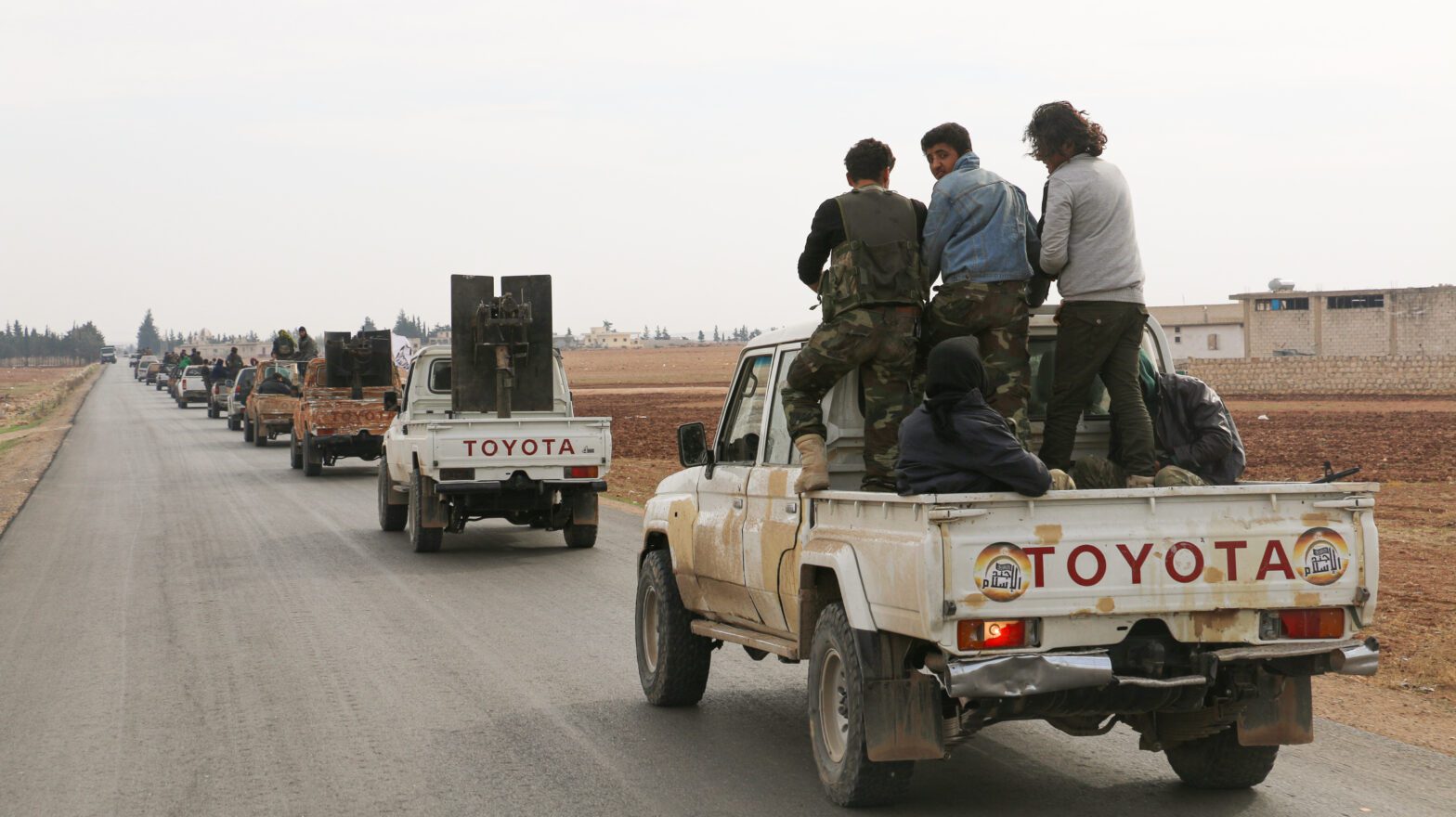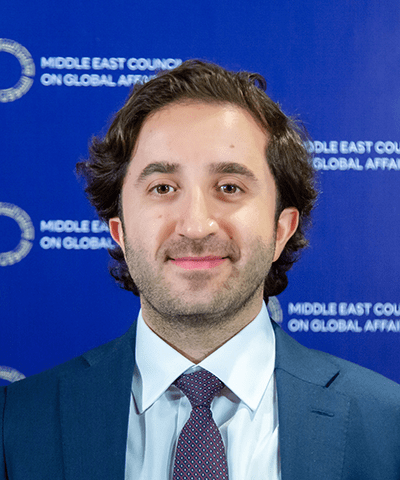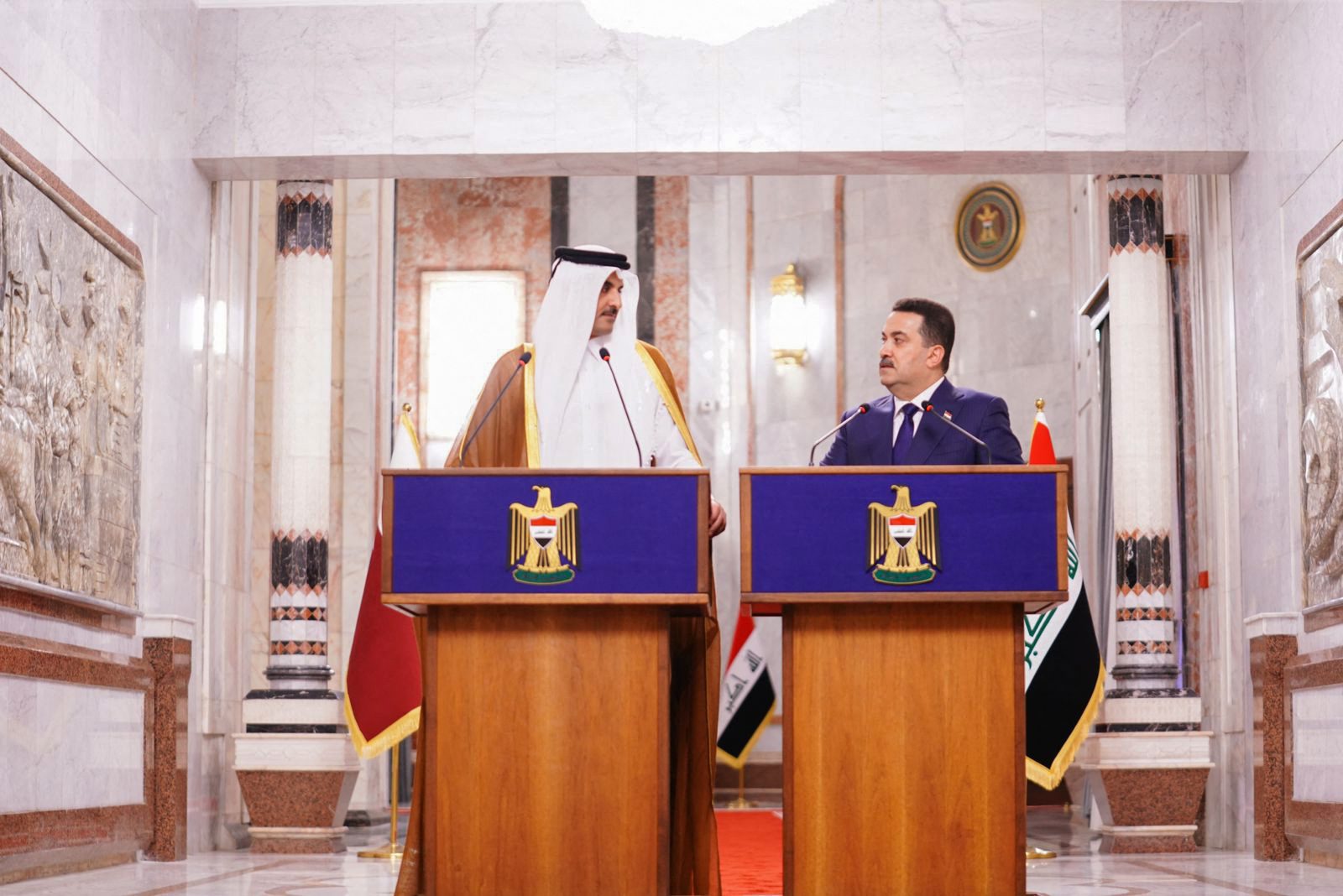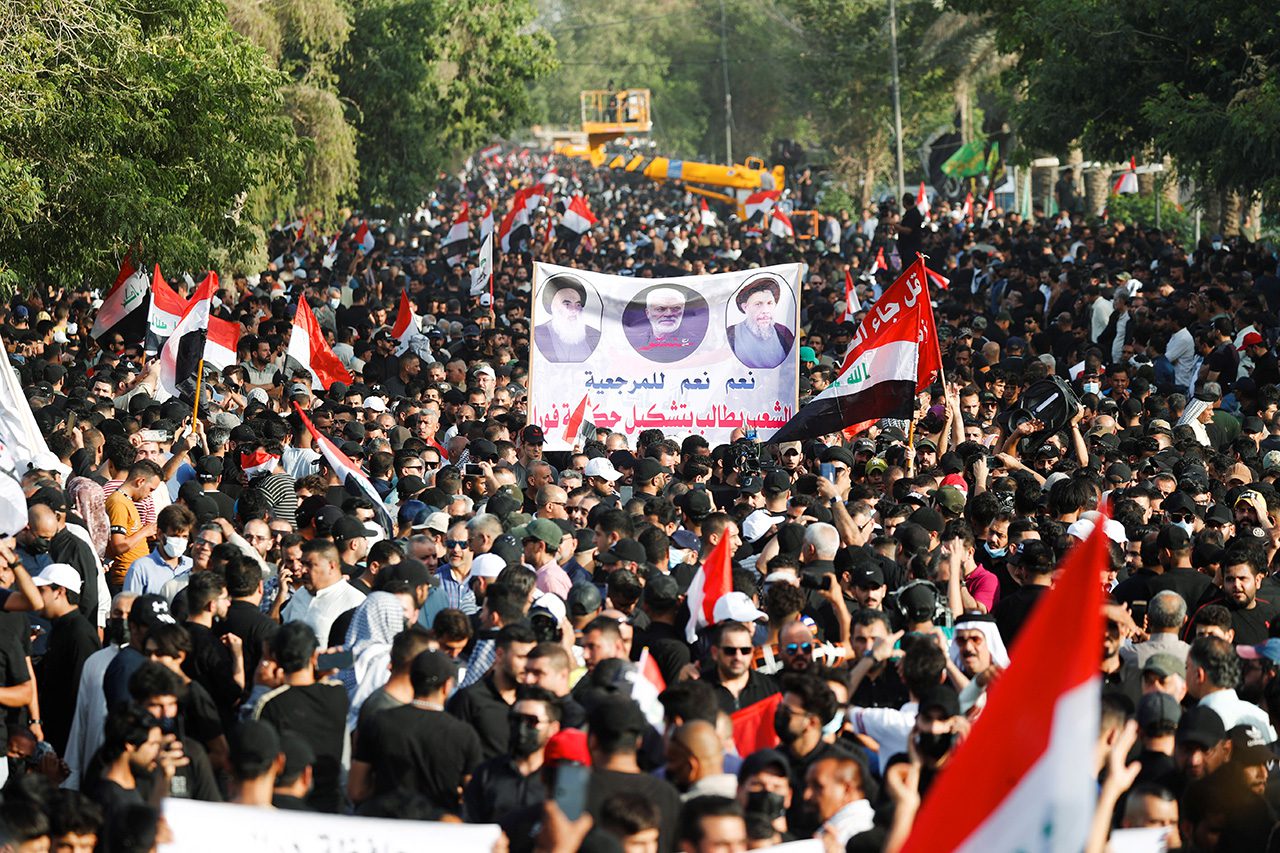
Security Sector Reform
in Complex Conflict Environments
Issue Brief, October 2022
Key Takeaways
The Rise of Armed Non-State Actors
The proliferation of armed non-state actors and the failure to contain their malign conduct or integrate them into governing and accountability structures does not bode well for the long-term stability of the Middle East and North Africa (MENA) region. Such actors are central players in ongoing intra-state conflicts and political instability and will likely co-exist with formal governing institutions for decades to come.
Work through Local Strategies
Security Sector Reform (SSR) strategies traditionally operate through state institutions. But such institutions may lack legitimacy or may be dysfunctional and non-existent. SSR strategies are more likely to achieve their objectives if they are adjusted to work through local realities where armed non-state actors have supplanted traditional authorities and provide services and security to local populations.
Focus on Consensus and Conflict Alleviation
SSR is a self-defeating and futile exercise in the absence of a political settlement, and should not be undertaken in the midst of conflict. Focusing efforts and resources on conflict alleviation and reconciliation can establish the foundational pillars for SSR.
Work on Securing a Political Settlement
Focusing on achieving some consensus and a political settlement, on at least some issues, before initiating SSR processes can identify red-flags and develop measures that could mitigate the second-order effects of conflict, including pre-war legacies, that often upend post-conflict strategies.
Introduction
Civilian populations in the conflict-ridden countries of the Middle East and North Africa have undergone a radical transformation of their governing structures. In countries like Iraq, Syria, and Libya, these structures are increasingly dominated by unconventional security providers such as militias and paramilitary groups aligned with the state, creating complications for good governance and security sector reform (SSR). SSR is generally led and executed by external actors, in partnership with local decision-makers and communities. It aims to de-mobilize armed groups and integrate them into formal state structures, including the army and the police. However, for indigenous populations, in conflict-ridden places like Iraq, Syria, and Libya, the authority that armed groups wield outside of formal institutions is deeply entrenched. In some instances, these actors have greater legitimacy and credibility than their institutionalized counterparts.
This paper explores whether SSR and good governance strategies are suited to engaging with armed groups that have either supplanted or co-exist with the state and whether they should be integrated into formal governing structures. It also examines how SSR strategies can accommodate the changing character of war in the region, where there has been a marked preference for proxy warfare over the use of conventional military tools and forces. Furthermore, the paper will consider the implications of SSR on post-conflict transitioning societies. The main argument is that these dynamics make conventional SSR approaches—which are focused on the state, its institutions, and traditional ruling elites—ill-suited to political and conflict environments in a hybrid security order where state institutions are either severely weak or dysfunctional.
At its essence, SSR is a multi-layered process that is underscored by strengthening accountability, respect for human rights, and the rule of law.1 It is focused on rehabilitating institutions and re-integrating armed groups by equipping fighters with skills and training so they can seek alternative employment outside of the security sector. By looking at conflict-ridden countries like Iraq, Syria, and Libya, the paper recommends that policymakers reconceptualize and recalibrate SSR approaches away from their emphasis on the state and take account of the interactions between armed groups and their local communities. SSR often has the potential to enable, rather than alleviate, conflict. Various examples in the region are drawn on to highlight how SSR can create imbalances that reinforce deep-rooted grievances. It recommends managing and regulating hybrid security orders, rather than challenging deeply entrenched local norms and practices.
Adapting to Complex and Congested Conflict Landscapes
When the Islamic State in Iraq and Syria (ISIS) seized northern Iraq and eastern Syria in 2014, the fiercest response came from a plethora of non-state armed actors, who were later empowered by the international community and the U.S.–led coalition to defeat ISIS.2 The United States and other western countries responded to the crisis by pouring in substantial support to these actors, either directly through the provision of weapons and finance, or indirectly through state institutions. Initiatives included train-and-equip programs that mobilized non-state armed actors in response to the impending threat presented by ISIS.3 This also saw the United States provide air cover to some of these groups.4
The unprecedented state fragility and turmoil across numerous countries in the region created an environment conducive to the empowerment and proliferation of armed groups. Such groups range from militia fighters, tribes, and secessionists, to jihadi groups. All have been central players, if not enablers of, intra-state conflicts and proxy wars, and have reshaped domestic political orders by securing parliamentary seats and taking control of ministries.5
Other groups have gone as far as modifying the territorial boundaries of the Middle East, as was notable when ISIS seized control of Mosul in 2014 and, to a lesser extent, with the emergence of an autonomous Kurdish enclave in north-east Syria.6
Collectively, armed groups number in the hundreds, and their fighters number hundreds of thousands. Syria alone hosts vast numbers of autonomous armed groups. There are roughly 50,000 to 70,000 Syrian regime-aligned militias, along with 10,000 to 35,000 Iranian proxy fighters, and at least 6,000 Turkey-aligned fighters in the north-west; Hezbollah provides close to 10,000 fighters, the Peoples’ Protection Unit (YPG) numbers 10,000 to 15,000 fighters.7 There is a similar picture in Iraq, Yemen, and Libya.8
The emergence and mobilization of these groups has transformed the conflict landscape in the Middle East where armed groups have long existed but have never before experienced such prominence. This has become evident by their control or co-option of state institutions, and their control of de-facto proto states (as in the case of ISIS in Iraq and Syria, and the YPG in Syria), not to mention their control of large swathes of territory. Armed groups operate in a legal, constitutional, and political lacuna where they either work and co-exist alongside formal state actors (military, police, and counter-terrorism forces) or are formally integrated into these institutions without submitting to state authority.9
This is manifest in the complexities and contradictions of the relationship armed groups have with both local and external actors. In Iraq, western governments have worked with the Iraqi armed forces and Iraqi police units, Arab Sunni tribes in northern Iraq, Shiite fighters within the Popular Mobilization Force (PMF), and the Kurdish Peshmerga.10 In Syria, the West has supported and relied on Arab rebel groups fighting the Assad regime, as well as the YPG, which refuses to fight the regime.11
Each of these actors has at some stage fought one another. In Libya, European countries backed rival militias. Italy and most other EU member states backed the Tripoli-based Government of National Accord (GNA), while France supported General Khalifa Haftar’s Libyan National Army (LNA).12 Adding to the problem, states that had previously underpinned their national security interests with conventional forces are now shifting toward proxies. Turkey, in particular, has established and mobilized proxy groups in conflicts in Syria and Libya.13
The dire humanitarian contexts in which security providers operate cannot be understated. War in Syria has resulted in the displacement of more than 12 million people and, according to official estimates, at least 300,000 people have been killed, which is tantamount to 1.5 percent of Syria’s pre-war population –– the number may be much higher.14 In Syria, 13.5 million people need humanitarian aid, in Yemen that number stands at 21 million and in Libya, 2.4 million.15 The reverberations of the humanitarian crisis mean that populations are likely to suffer long-term destitution, which does not bode well for long-term stability and efforts to prevent conflict relapse, in the midst of a global economic crisis and climate-induced challenges.16 According to studies, climate change will further exacerbate and enable conflicts, with one in four intra-state clashes resulting from such conditions.17
Conversely, while humanitarian suffering continues to afflict millions, international support to groups such as the PMF or the YPG during the course of the conflicts has exponentially enhanced both their domestic legitimacy and international recognition.18 The implications of this continue to rebound: the PMF has built on the support and its battlefield heroics to secure a marked presence in the Iraqi parliament, achieving a remarkable second place on its electoral debut in 2018.19 It secured constitutional legitimacy, just two years after it was established in 2014 in response to ISIS, but resists oversight from the state and civilian authorities.20 The YPG has also consolidated its hold on Syria’s north-east, creating both political instability and complications for the West’s relations with Turkey, which has undermined the campaign to defeat ISIS.21
Double-Edged Sword
SSR has hence come under significant pressure in the conflict zones and transitioning societies of the region.22 SSR is premised on rehabilitating institutions and re-integrating armed groups, equipping fighters with skills and training so they can seek alternative employment outside of the security sector.23 However, the process through which populations acquire service and security delivery has changed as a direct consequence of the growth in armed non-state actors and the hybrid security orders that have followed. Such actors either co-exist with or supplant conventional authorities thereby supplementing or negating the services that may previously have been exercised by the state.
To highlight the extent to which these actors undertake governance, in Idlib, welfare services, emergency relief, and municipal services (such as waste removal and water supply), are provided by civilian-run city and town councils.24 In Syria’s north-east, the YPG controls and oversees legislative, judicial, and executive councils.25 In Iraq’s south, the PMF mobilized its personnel to respond to the COVID pandemic by providing medical support to victims, building mobile hospitals, providing burial services, and distributing food.26 In Iraq’s north, tribal leaders mediate disputes between former members or supporters of ISIS and the community to prevent revenge attacks. They also administer wider informal justice and moderate disputes in coordination with the formal judicial system.27
Policymakers are presented with difficult decisions in hybrid security orders. Outside actors, including governments, donors, and development organizations, engaged in institution-building have the ability to create conflict. The rehabilitation of the army, for example, can reinvigorate historic grievances towards an institution that may have a history of repression. As an illustration, in Iraq, the Shiite militia groups that emerged from socio-political or socio-religious movements in the 1980s and 1990s detest the military because of its complicity in wide-ranging human rights abuses, including systematic atrocities against the Shiite community.28 Similarly, the political outlook of the Kurdish Peshmerga in the Kurdistan region or the YPG in Syria is still affected by Baath regime oppression in Syria and Iraq, including genocide against the Iraqi Kurds in the 1990s.29 In Libya, the refusal to fully integrate into a national force is one part of an effort to maintain post-conflict political supremacy. It is also an attempt to prevent the revival of a national army that could be co-opted or weaponized by the political class or their rivals.30 In other words, SSR has the potential to be a self-defeating exercise as a consequence of pre-war legacies.
SSR sets out to persuade armed groups to transfer their weapons to civilian authorities and integrate them into the state or encourage members to acquire alternative skills and employment; however, this fails to account for the socio-economic environment and the political economy of war. In most instances, armed groups are comprised of young fighters who are attracted by the prestige, status, and livelihood that armed groups provide.31 The involvement of outside actors and the pouring in of resources creates a political economy that empowers militia leaders, warlords, and criminal enterprises to fill the governance void left by the demise or decline of the state. This is evidenced by a comparison of Syrian army personnel with Iranian-backed militias. For example, the Syrian army in Deir el-Zour provides a salary of $7.50 per month, while Iranian-backed militias are paid double.32 Moreover, militia fighters are “assigned rotations of 15 days on duty and 15 days off… [while] the Syrian army often sends soldiers far from home for at least two months at a time, with home leaves of only five days.”33 Militia members carry an ID card that grants them access to a food basket every month, safeguards them against detainment and interrogation by the Syrian military, and provides them with complementary flights to Damascus.34
The problem is not helped by ill-managed and poorly regulated support for national authorities within which militia groups reign supreme. For instance, in Libya, since 2019, the EU has invested millions of euros into addressing the refugee crisis, but those funds were deflected to networks of groups involving human traffickers, members of militias, and coastguards that take advantage of migrants.35
Militia groups in general also have a known capability for conducting raids on, or co-opting, infrastructure such as roads, hospitals, and power supplies as well as banking networks, ports, and checkpoints. The PMF and Saraya al-Salam dominate Iraq’s illegal economies, including oil and drugs smuggling, and the construction, service, and scrap metal industries.36 This is facilitated by Iraq sharing more than 24 borders, in addition to various land and maritime ports, with surrounding countries that militias either control or have influence over. Corruption at these border points has produced more than $10 billion in revenue for militia groups and their partners.37 In other words, addressing the political economy of conflict requires the buy-in of a multitude of actors. Political and economic dynamics are complex webs of inter-personal and inter-organizational relations of which militia groups are only one component, since they also involve the complicity and collusion of political elites and tribes.38
Recommendations
SSR processes are led by actors that, from the perspective of armed groups, are not neutral third parties. From the perspective of a militia leader, the western-led or dominated institution-building exercise is no different from the western military force or political actor that is implicated in the tumult and violent instability of a transitioning society. To address the challenges presented by hybrid security orders, SSR must put the cart before the horse. Re-configuring security structures sets up a conflict with predominant security providers that have more legitimacy than outsiders assume and, in some cases, command greater respect than political elites.
Policymakers must create an inclusive dialogue before SSR is initiated by attempting to establish a consensus within the political class and militia groups, since any one of these actors can torpedo or upend SSR processes, or at least render them futile. This could be an exercise that identifies potential red flags and thinks about measures that could mitigate the second-order effects of conflict, including pre-war legacies. For example, in Libya, after the toppling of Muammar Gadhafi, local and international actors quickly moved to begin the process of security sector reform, in tandem with a constitution-writing process and efforts to hold elections. The premise of this paper is that such processes have failed to be wholly inclusive, and have as a result reinforced grievances, while enabling militia groups to create facts on the ground that undermine wider national reform processes. This saw city elections being rushed through by rival militia groups while the central authorities were occupied with holding a national election to complete the transition to the post-Gadhafi era.39 This necessitates dialogue and reconciliation as a pre-requisite to SSR and wider post-conflict management strategies, as opposed to the conventional approach that views reconciliation as being simply one component amongst many others in post-conflict reconstruction exercises.
Like Libya, deep-rooted grievances were also ignored, neglected, or kicked down the road in Iraq after the 2003 invasion. The Iraqi opposition parties and the U.S., with United Nations backing and support, moved to quickly write a constitution and hold elections after the 2003 invasion, without the prior stabilisation and reconciliation that this paper espouses. The consequence, as in Libya, was, from the perspective of one side (Arab Sunnis), the legitimisation and empowerment of one set of political parties (primarily the Kurds and Arab Shiites).40 This fostered the conditions that enabled the Sunni insurgency.
The Iraqi case is also instructive because power-sharing arrangements were in place and enshrined after the constitution was passed but the vote was boycotted by the Arab Sunnis.41 What could have instead unfolded was an incremental approach to consensus-building and security sector reform. Such dialogue, as a foundational pillar in and of itself, aligns SSR with the conflict and political landscape. It also reduces the prospect of conflict relapse by fostering trust, addressing fears of marginalisation, and opening up channels of communication between different political and ideological factions, new and old power bases, tribes, and regions.
There will be apprehension in relation to the practical difficulties and legal implications of working with armed non-state actors that are complicit in humanitarian atrocities, especially if this empowers them with resources and recognition. However, if anything, engaging these actors in negotiations opens up a dialogue that might empower moderate actors and provides a forum for directly challenging the malign and criminal conduct of extremist groups. It may also be argued that including armed groups in formal peace negotiations that are either sponsored or enabled by governments and multilaterals would enhance their legitimacy and compound the problem. But the Rubicon has already been crossed: The most dominant armed groups in the region––the Houthis in Yemen, Hayat Tahrir al-Sham (HTS) and the YPG in Syria, and the PMF in Iraq––may not be to the liking of outside actors, whether in the United States and Europe, or Turkey, and Iran. However, they have already secured substantial local and national influence, as well as global recognition, making such apprehension misplaced.
State fragility has been addressed primarily by working through the state. But aiming for local, rather than national, strategies amid weak and de-legitimized institutions can create potential opportunities to alleviate conflicts. Such arenas should be conceived as spheres for mutual co-existence between deeply entrenched armed non-state actors, the traditional ruling class, and the wider community that function both outside of and within the framework of the state. At the very least, this could develop tools and mechanisms for individually addressing complex contours that comprise hybrid security orders. It would also accommodate the reality that, in post-conflict countries, security and governance is shaped, dominated, and led by a plethora of different actors.



